MABUHAY!
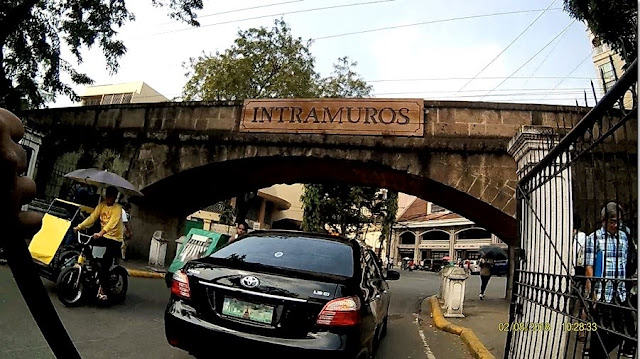 |
| An arched passageway in the walled city of Intramuros |
This is a photo and video journal of my foot travel to the historic WALLED CITY of INTRAMUROS which is the venue of a social architecture workshop I attended this day entitled ANTHOLOGY. I decided to create a separate article to feature this historic place due to its impact on our history. The next post will feature more in the workshop.
GETTING THERE
From our project job site in E. Rodriguez Ave. in Quezon City, I took a jeepney going to Manila City Hall. Then I walk down at LAGUSNILAD, which is supposed to be the city's sump pit for rainfall, but now turn into pedestrian underpass with lots commercial shop booth. Then I took a pedicab ride from the Intramuros vehicle's entrance at Muralla street all the way to Casa Manila. Then I took a stroll passing thru Manila Cathedral at Gen. Luna Street straight to Fort Santiago.
 |
| My foot travel from Muralla street to Fort Santiago |
 |
| Puerta de Isabel II, one of the restored gate of Intramuros |
The Walled City was originally located along the shores of the Manila Bay, south of the entrance to Pasig River. Guarding the old city is Fort Santiago, its citadel located at the mouth of the river. Land reclamations during the early 20th century subsequently obscured the walls and fort from the bay.
In 1945, the Battle of Manila devastated Intramuros. The Japanese Imperial Army made their final stand here against Filipino guerillas and the allied forces.
Now Intramuros is administered by the Philippine government agency Intramuros Administration since April 10, 1979. The administration strictly maintained the old Spanish house "BAHAY NA BATO" (house of stone) architectural motif on the construction of commercial establishment here.
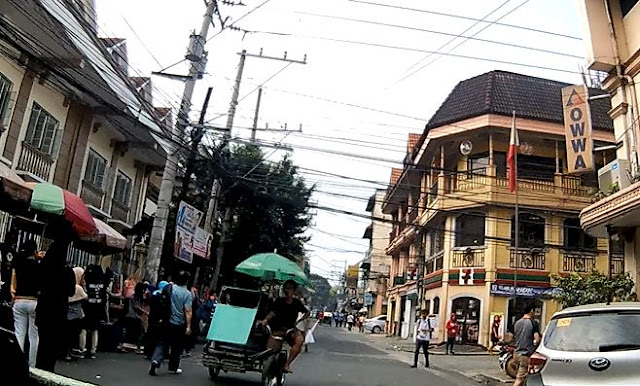 |
| Commercial establishment buildings still maintain the Spanish architectural motif |
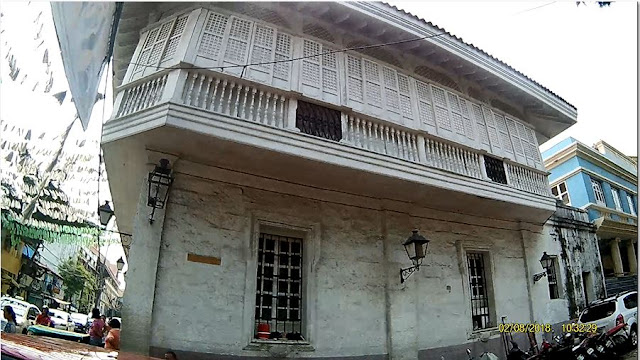 |
| A Spanish mestizo building with adobe blocks in the bottom and wood on top |
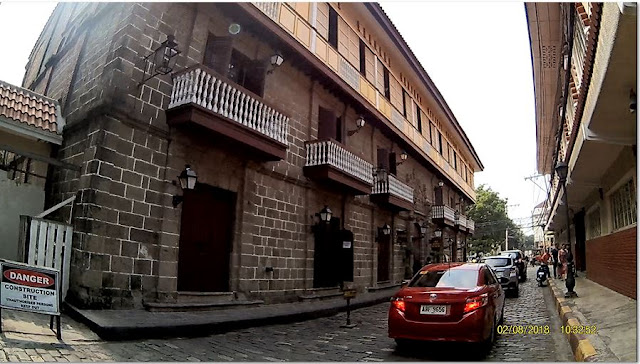 |
| Another Spanish mestizo building |
CLICK the LINK to READ the related article: Travelling As It Is! A Walk along Manila City's Historical Path
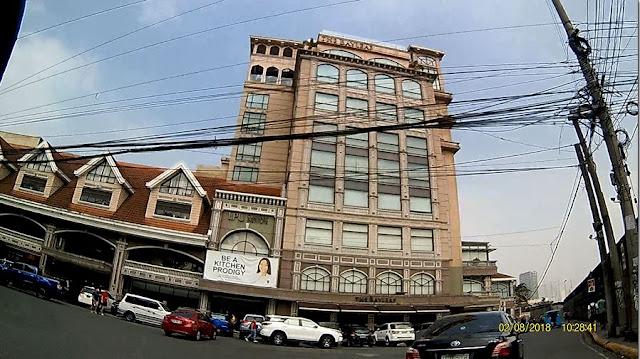 |
| Modern commercial building inside Intramuros |
 |
| Commercial establishment buildings in Intramuros |
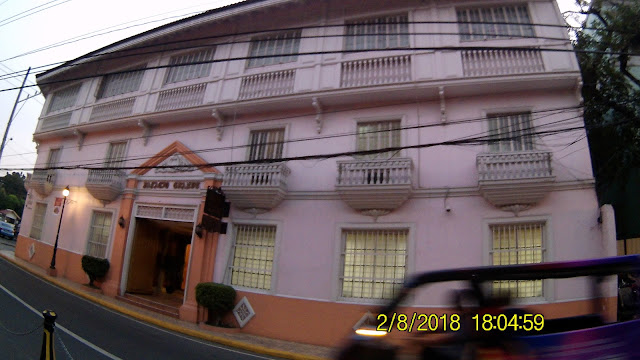 |
| This heritage building is well preserved. |
Some streets are still paved with traditional cobblestone.
A tourist can choose from a wide variety of transportation service for a tour around Intramuros. Popular is the ride in a horse-drawn carriage locally known as "calesa".
 |
| A horse-drawn carriage locally known as Calesa is very popular tourist ride in Intramuros |
CLICK the LINK to READ the related article: Company Outing in Las Casas Filipinas de Acusar
Bamboo bikes or "Bambikes" for rent are also offered here.
For a cheaper option, one can take a pedicab, a pedaled bike with a sidecar. Or just take a walk and enjoy the sight and sound of the place.
 |
| A pedicab driver inflating his bike's wheel |
One can gaze upon beautiful street arts while taking a stroll.
Points of travel interest in Intramuros are too many to be featured in one article. Those shown here are located along my trail path.
THE MANILA CATHEDRAL
The Minor Basilica and Metropolitan Cathedral of the Immaculate Conception
Filipino: Basilika Menore at Kalakhang Katedral ng Kalinis-linisang Paglilihi;
Spanish: Basílica Menor y Catedral Metropolitana de la Inmaculada Concepción,
also known as Manila Cathedral (Spanish: Iglesia Parroquial de Manila), is the cathedral of Manila and basilica located in Intramuros, the historic walled city within today's modern city of Manila, Philippines. It is dedicated to the Immaculate Conception, a title for the Blessed Virgin Mary, the principal patroness for the Philippines. The cathedral serves as the episcopal see of the Archbishop of Manila and is also considered as the Mother Church of the Philippines, along with Basilica of Sto. Nino in Cebu.
The cathedral was originally a parish church in Manila under the Archdiocese of Mexico in 1571, until it became a separate diocese on February 6, 1579 upon the issuance of the papal bull, Illius Fulti Præsido by Pope Gregory XIII. The cathedral was damaged and destroyed several times since the original structure was built in 1581 while the eighth and current structure of the cathedral was completed in 1958. (Excerpt from WIKIPEDIA https://en.wikipedia.org/wiki/Manila_Cathedral)
THE PALACIO DEL GOBERNADOR
The Palacio del Gobernador ("Palace of the Governor") is a government building located in Intramuros, Manila, Philippines. Located across from Plaza de Roma and built in its current form in 1976. At present, the building houses the Intramuros Administration, the Commission on Elections and the Home Development Mutual Fund National Capital Region Office. It also previously housed the Bureau of the Treasury until it relocated across Plaza de Roma to the Ayuntamiento de Manila.
The site of the present building was where the former residence of the Governor-General during the Spanish Colonial Era was located until an earthquake destroyed it on June 3, 1863. The Malacañang Palace then became the Governor-General's official residence. (Excerpt from WIKIPEDIA https://en.wikipedia.org/wiki/Palacio_del_Gobernador )
MEMORARE MANILA 1945
On February 18, 1995, the Memorare-Manila 1945 Foundation dedicated a memorial called the Shrine of Freedom to honor the memory of the over 100,000 civilians killed in the battle. It is also known as the Memorare Manila Monument and is located at Plaza de Santa Isabel in Intramuros. The inscription for the memorial was penned by National Artist for Literature Nick Joaquin and reads:
"This memorial is dedicated to all those innocent victims of war, many of whom went nameless and unknown to a common grave, or even never knew a grave at all, their bodies having been consumed by fire or crushed to dust beneath the rubble of ruins."
"Let this monument be the gravestone for each and every one of the over 100,000 men, women, children and infants killed in Manila during its battle of liberation, February 3 - March 3, 1945. We have not forgotten them, nor shall we ever forget."
"May they rest in peace as part now of the sacred ground of this city: the Manila of our affections."
( Excerpt from Wikipedia https://en.wikipedia.org/wiki/Battle_of_Manila_(1945)
SAN AGUSTIN CHURCH- MANILA
San Agustin Church (Spanish: Iglesia de la Inmaculada Concepción de María de San Agustín) is a Roman Catholic church under the auspices of The Order of St. Augustine, located inside the historic walled city of Intramuros in Manila.
In 1993, San Agustin Church was one of four Philippine churches constructed during the Spanish colonial period to be designated as a World Heritage Site by UNESCO, under the collective title Baroque Churches of the Philippines. It was named a National Historical Landmark by the Philippine government in 1976.
( Excerpt from Wikipedia https://en.wikipedia.org/wiki/San_Agustin_Church_(Manila) )
CLICK the LINK to READ the related article: The Historic City of Vigan - Architecture and Travel
FORT SANTIAGO
FORT SANTIAGO is a citadel first built by the Spanish conquistador, Miguel López de Legazpi for the newly established city of Manila in the Philippines. The defense fortress is part of the structures of the walled city of Manila referred to as Intramuros.
The fort is one of the most important historical sites in Manila. Several lives were lost in its prisons during the Spanish Colonial Period and World War II. José Rizal, one of the Philippine national heroes, was imprisoned here before his execution in 1896. The Rizal Shrine museum displays memorabilia of the hero in their collection and the fort features, embedded onto the ground in bronze, his footsteps representing his final walk from his cell to the location of the actual execution.
(Excerpt from WIKIPEDIA https://en.wikipedia.org/wiki/Fort_Santiago)
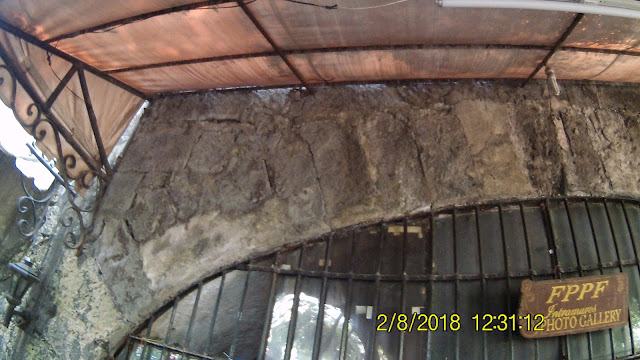 |
| Adobe, a quarried natural stone in the Philippines, is the choice of building blocks of our ancestral builders. |
 |
| The restored main gate of Fort Santiago |
 |
| This tunnel underneath the wall was converted into restrooms |
 |
| A Spanish signboard with English translation |
CLICK the LINK to READ the related article: Trekking Adventure in Banawe Rice Terraces, Ifugao

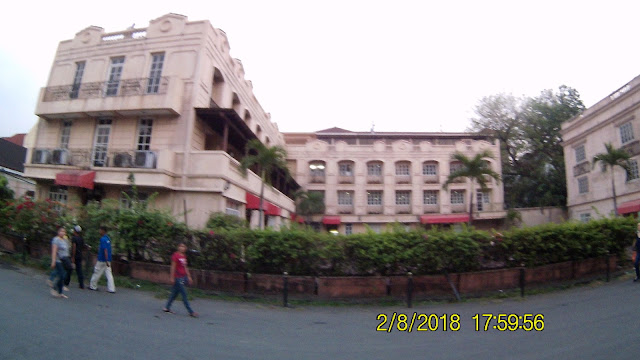
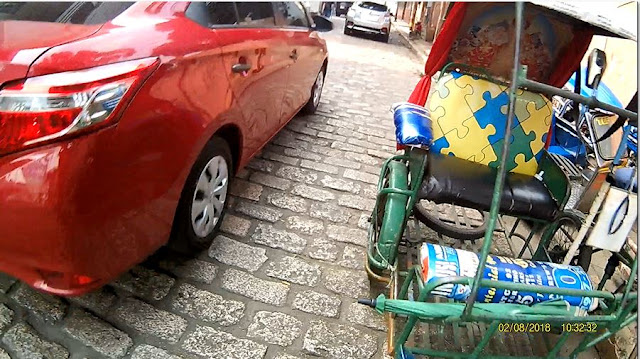


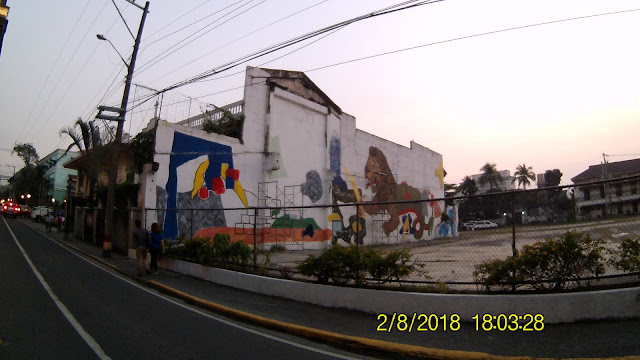
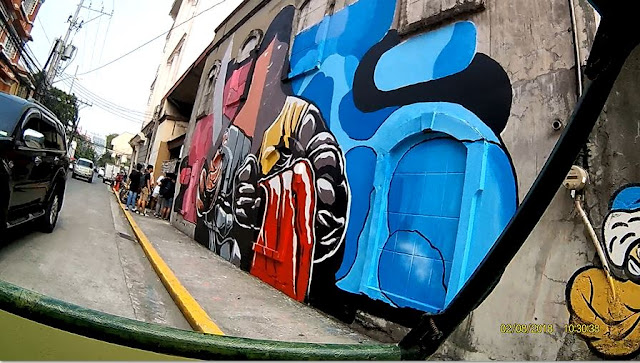
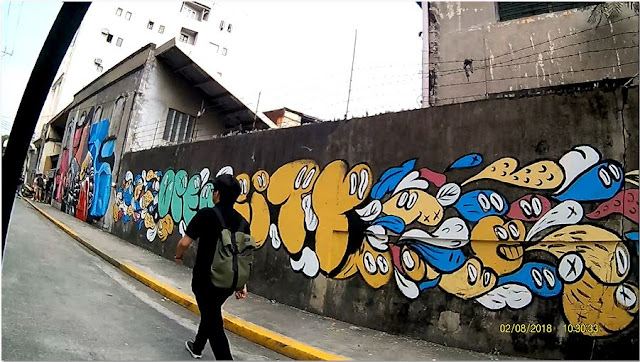






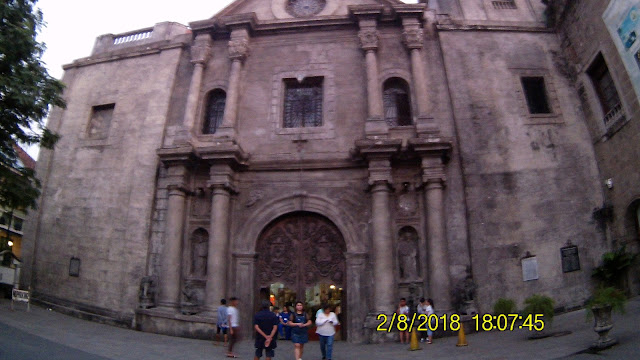

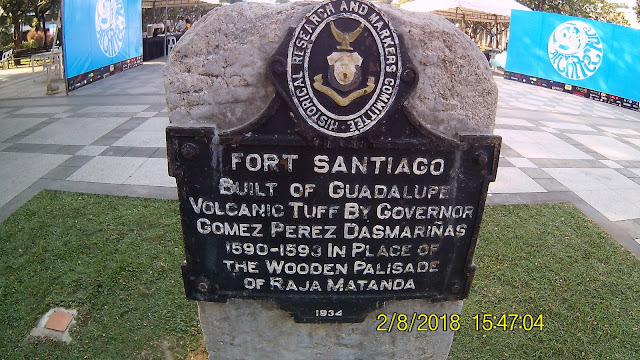

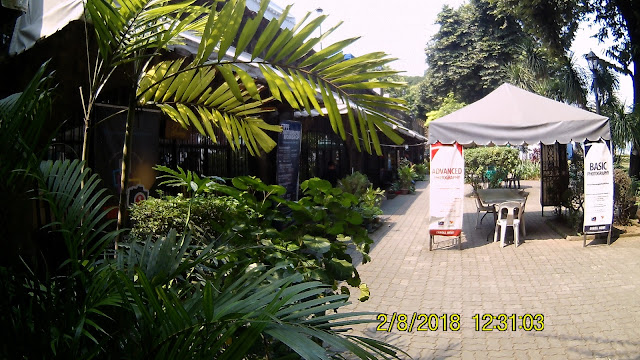
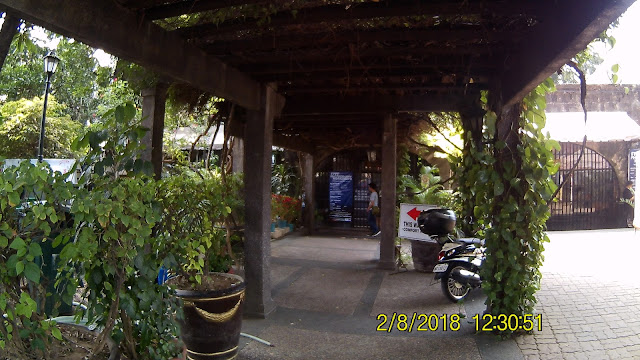
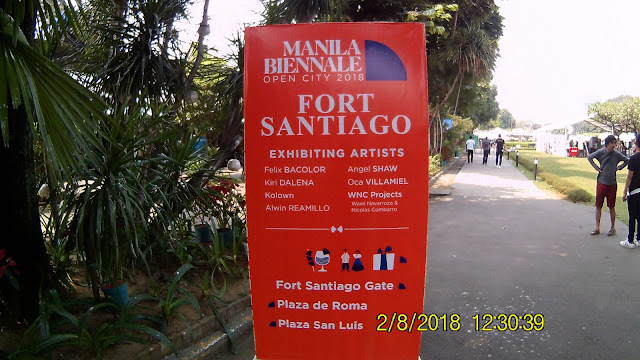
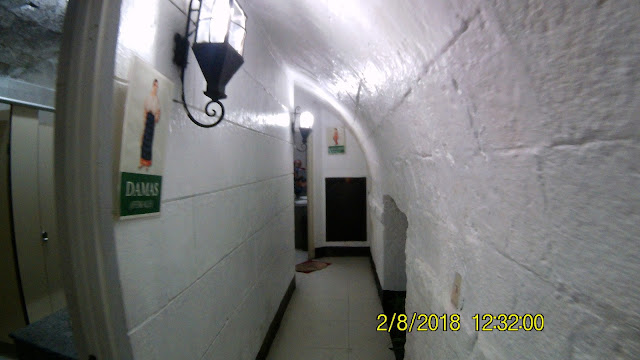

No comments:
Post a Comment